The question of what trout eat on any particular stretch of river at any particular time of the year is a key issue on fly fisher’s minds. Unlike in the USA we have few hatch charts, but we do know a few things from empirical knowledge.
Click in images to enlarge them
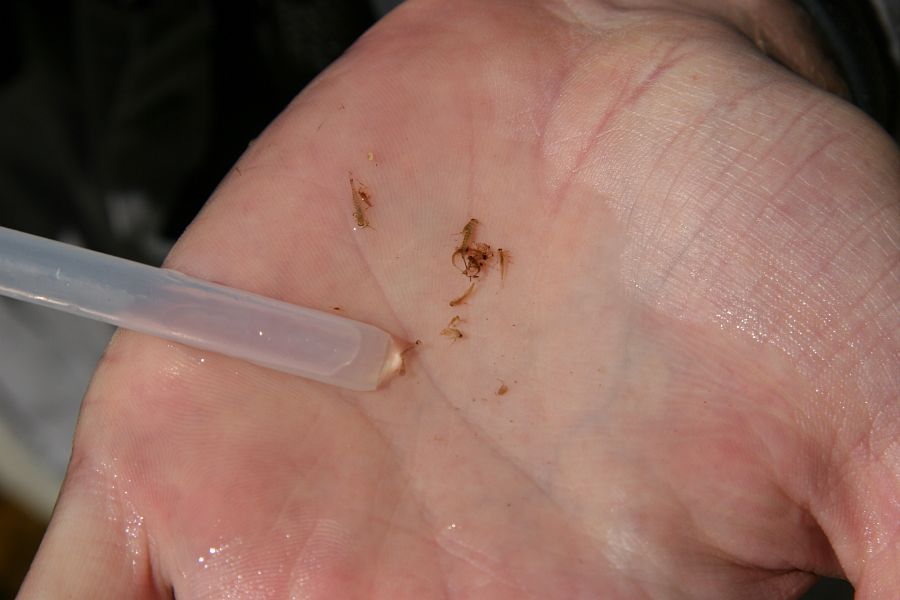
Stomach pump in action
For example I have made a habit over the years of checking the stomach contents on one or two trout each outing, using a pump and photographing the contents, either in the palm of my hand or in a container.
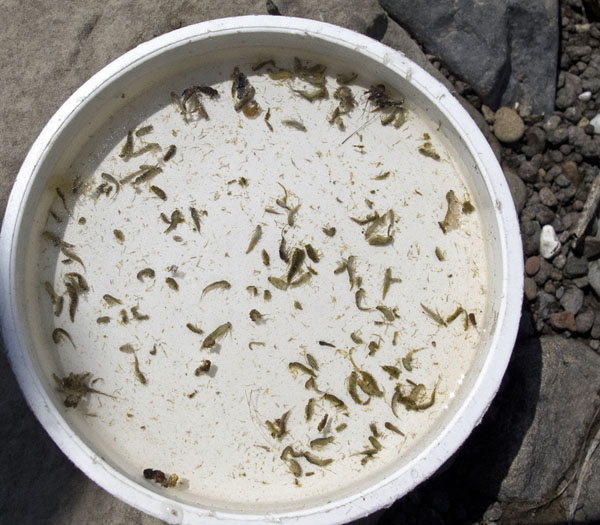
A container of stomach contents taken from a large fish caught in the Sterkspruit River
The over-riding feature of all this has been that nymphs predominate over adults, and among nymphs, mayflies are by far the most predominant insects.
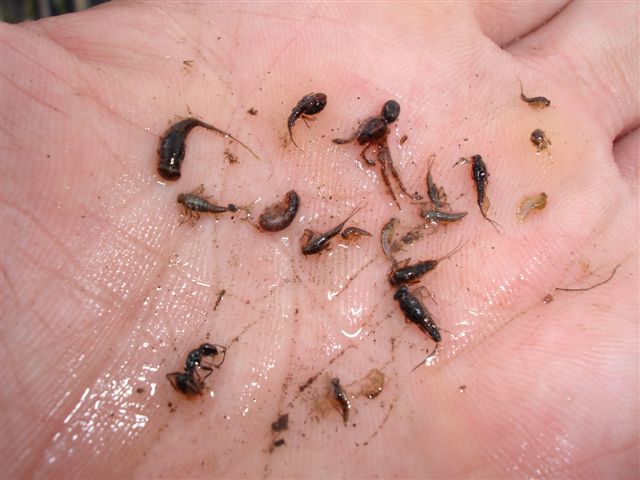
Note how mayfly nymphs predominate in the picture above
Some years ago Rebecca Tharme, a member of an elite team, the Freshwater Research Unit at the University of Cape Town's Zoology Department, researched the impact of flow reductions, both natural and those caused by humans such as weirs, water abstraction etc on perennial rivers and had test sites on both the Elandspad and the Smalblaar rivers in the Western Cape.
Her research methods included counting the number of insects per square metre of substrate down to a depth of ten centimetres in fast-flowing riffle areas of the river where the stream bed is covered in small rocks.
Of a total of 12 545 bottom-dwelling invertebrates per square metre, the order of dominance from highest to lowest was as follows for the six most abundant groups of organisms:
Abundance m2 % composition of total
Baetis mayfly nymphs 4542 36.2%
Midge larvae 4382 34.9 %
Caddis nymphs 637 5.1%
Beetle larvae 583 4.6%
Ephemerella mayfly nymphs 578 4.6%
Leptophlebid mayfly nymphs 333 2.7%
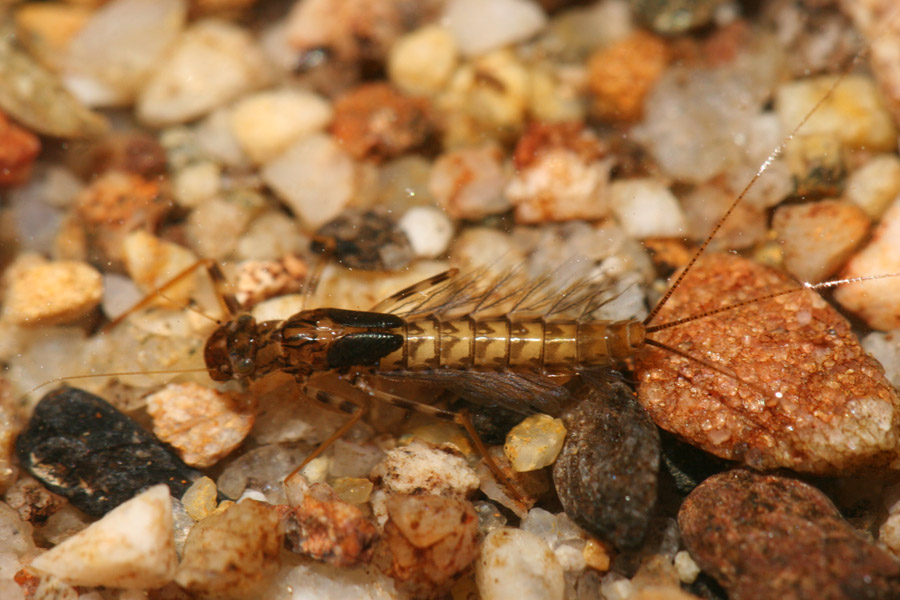
Leptophlebid Mayfly nymph
What is significant is that mayfly nymphs make up 43.5% of the total. She found that midge larvae (chironomids) made up 34.9%, but were very small and were found fairly deep in the substrate so are probably not that accessible to trout. This makes mayfly nymphs overwhelmingly the most prevalent source of food in these sections.
But in a survey by Jeremy Shelton the percentage breakdown of the stomach contents of 80 trout sampled on three headwater streams in the Western Cape showed that by weight adult midges predominated at 14.2% and adult mayflies made up only 5.6%. Mayfly nymphs made up 14.7%. What is fascinating is that insects with a beetle shape, true bugs and beetles, made up the biggest component - 18% - ahead of midge larvae. Adult caddis made up 1% and grasshoppers 0.3%.
In a scientific extract titled The Biology of Trout in Kenya Colony , Dr VD van Someren showed that trout appear mainly opportunist feeders, taking what the river and surrounding banks offer most commonly, and in the proportions in which such food is available. Thus in the higher reaches he found Black fly (simulium) larva predominated simply because they were more abundant, and in the lower, slower-flowing and more tree-lined reaches, terrestrials were more evident, including ants and grasshoppers, again simply because they occurred here in greater numbers.
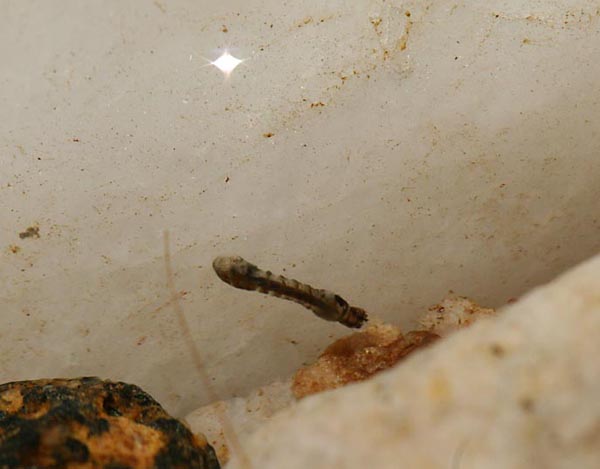
Black fly larva above and adult below. Photos by Ed Herbst.
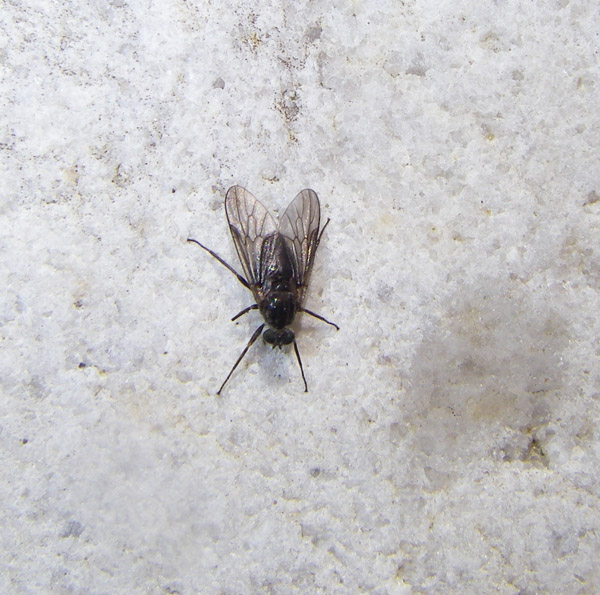
(Van Someren, by the way, also found no evidence, as has been claimed, that brown trout take surface food more than rainbows.)
Bob Crass on food in trout stomachs
The pioneering work done in this field by Bob Crass Bob Crass, the former Principle Scientific Officer (Research) of the Natal Parks Board, is very revealing. His survey of trout stomach contents, ‘A preliminary report on the food of trout in Natal’ was published in September 1946.
He examined and tabulated the stomach contents of 235 trout from six rivers and streams in Kwa-Zulu Natal; the Mooi, the Little Mooi, the Yarrow, the Loteni and the Inzinga. This range covers tiny headwater streams to relatively slow and meandering foothill rivers.
These were the percentages of trout stomachs in which each organism was found: mayflies (chiefly in the nymphal stage): 59.6 %, bugs and beetles: 34%, crabs: 30.5%, dragonfly nymphs: 19.9%, grasshoppers: 17.5%, ants, bees and wasps: 10.9%, frogs and tadpoles: 8.9%, caddis: 6.7% and termites: 2.1%. Thus nearly half the trout stomachs examined contained mayfly nymphs, one third insects with a beetle shape (bugs and beetles) and one third crabs.
Of the 4407 organisms found, 84.5 % were of aquatic origin and 15.5% were of terrestrial origin.
(What is significant in terms of the current NEM:BA proposals is that Crass makes no mention of fish being found in the trout stomachs and, if there were any, they must presumably be in the 0.4% that he puts into a ‘miscellaneous’ category.)
When and how to use stomach pumps on trout
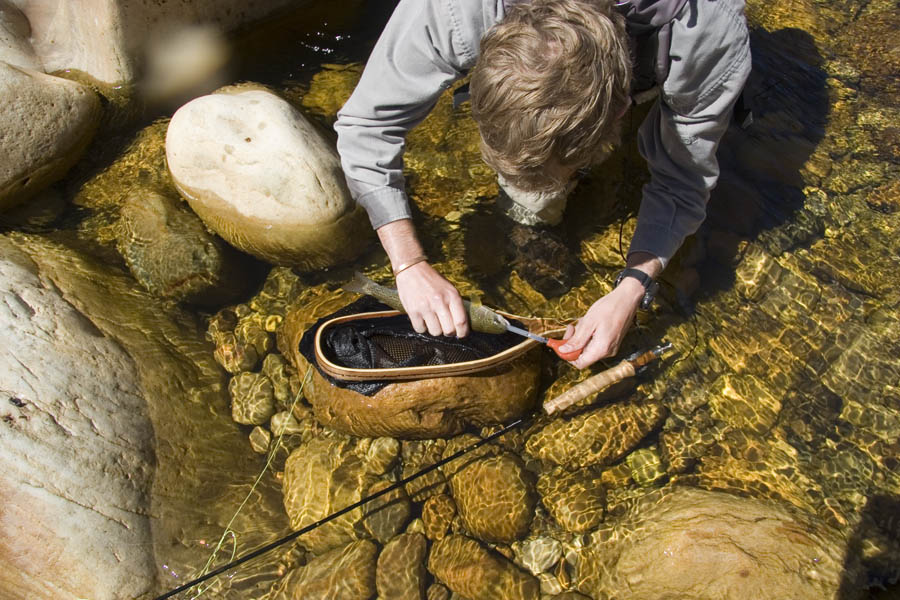
Perhaps in the interest of gaining more knowledge about the bugs trout feed on there is a place for anglers to do more regular stomach pumps, to photograph the contents, and to note the date and location. If you can’t identify any bugs you find refer the picture of them to a university entomology department for identification.
If done gently and according to the instructions using a pump is a safe and harmless procedure. There is no real point in testing more than one or two fish on the same day on an outing to a particular stream. There’s not going to be a huge difference. I usually test one fish in the morning and one in the late afternoon.
First flush out the pump several times to get it wet and clean. Squeeze the rubber bulb under water to fill it, then squeeze out at least half the water in the bulb and keep the bulb partially compressed.
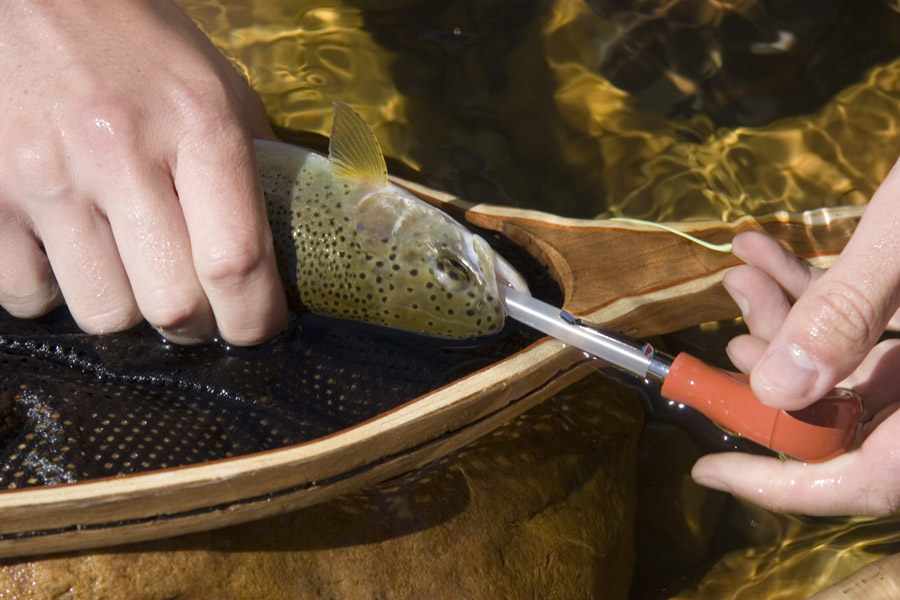
Note above how the rubber bulb is partially compressed as the plastic tube is gently inserted.
With the trout held on its side over the net gently insert the plastic tube until resistance is felt. At this point squeeze a small amount of water out of the bulb into the trout’s stomach. Now slowly release your pressure on the rubber bulb and it will inflate and draw stomach content into the clear plastic tube which you will often see. The reason for releasing the pressure very slowly is so as not to draw any stomach lining into the plastic tube which could damage the wall of the stomach. Withdraw the tube and immediately ensure the fish is okay and then release it.
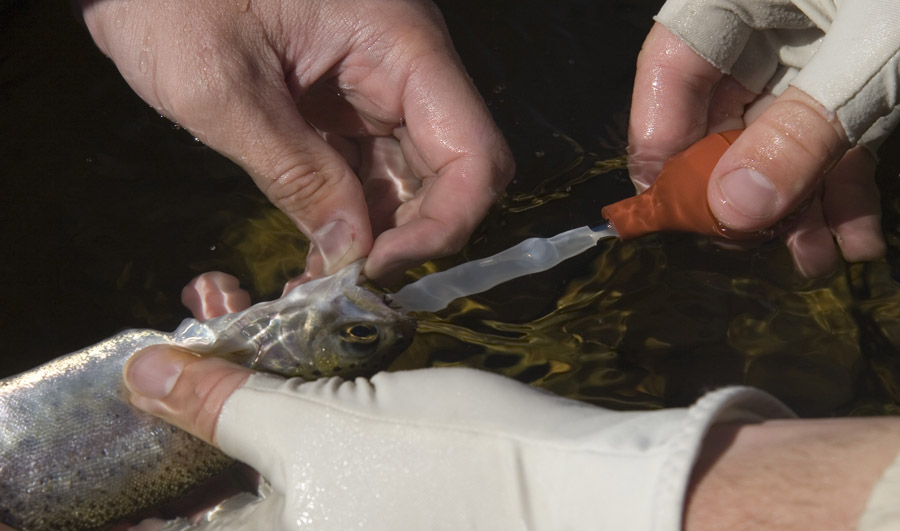
Note the stomach content just starting to appear in the clear plastic tube.
Squeeze the bulb to empty the tube and its contents into a container, or as I most often do, into the palm of my hand. Record the contents, or better still, take a photo of them.
Tom Sutcliffe



